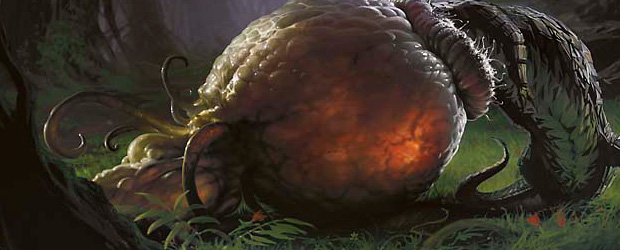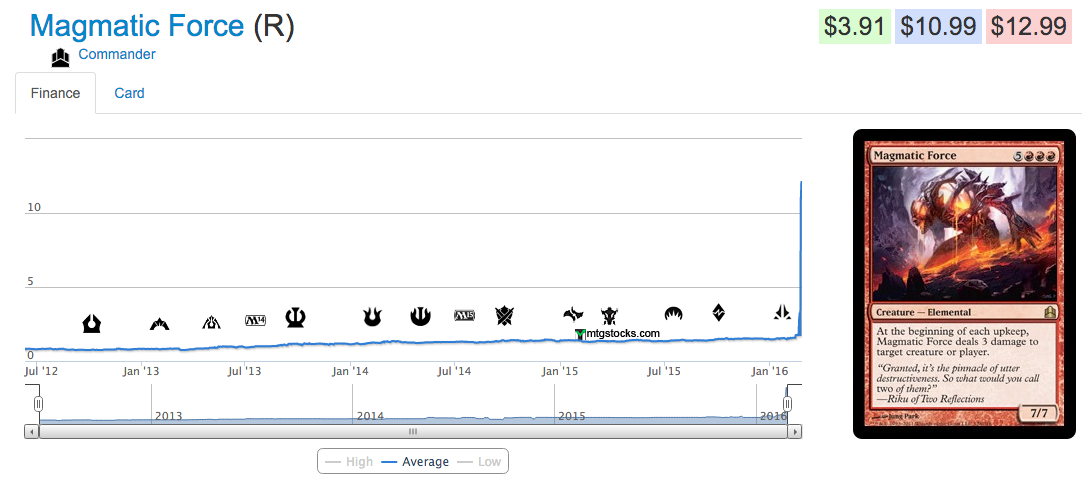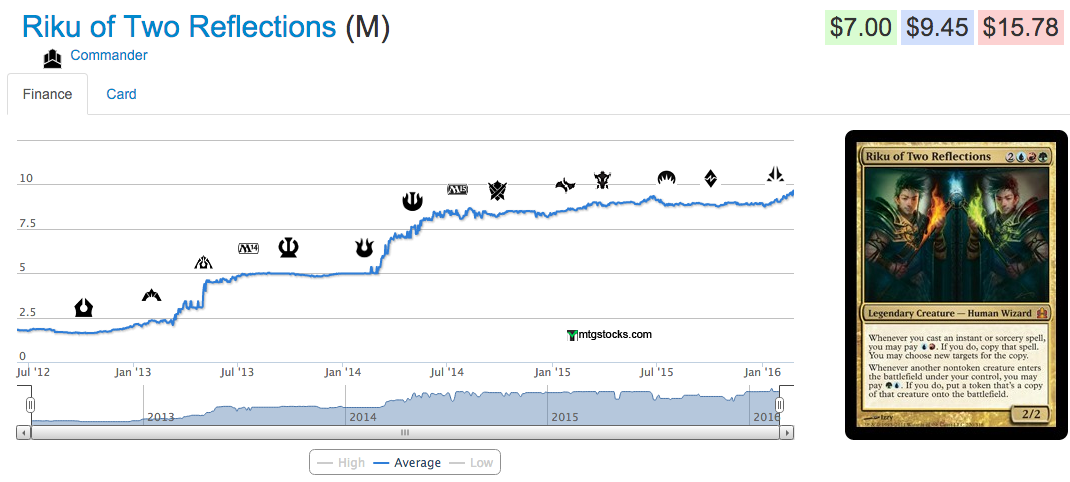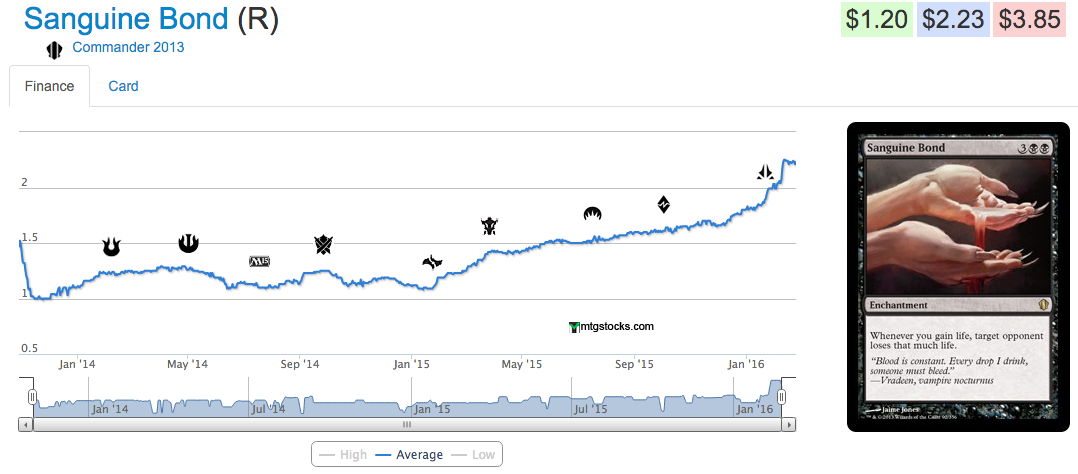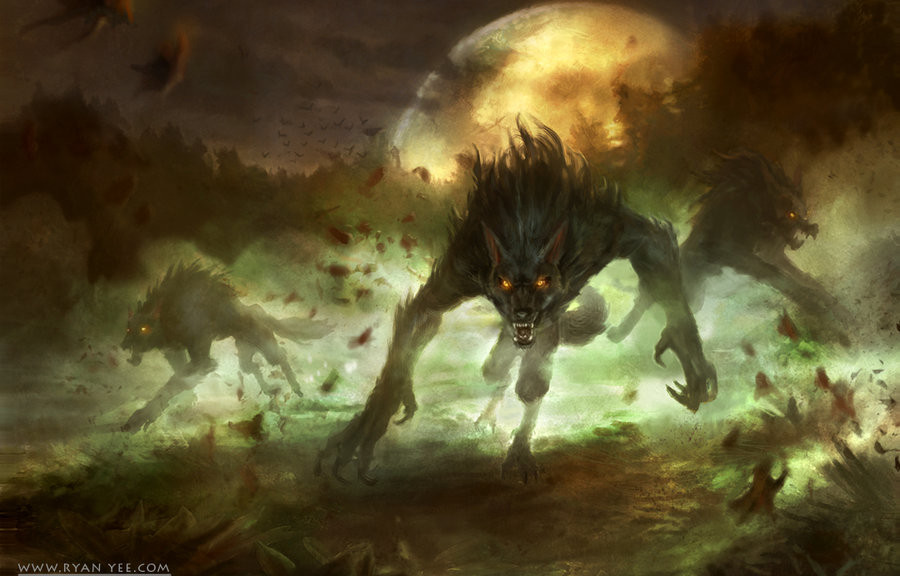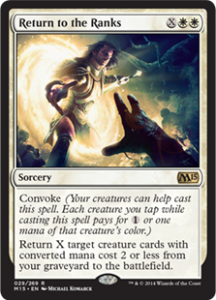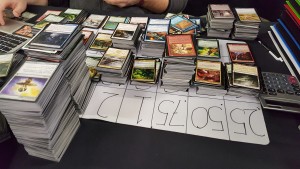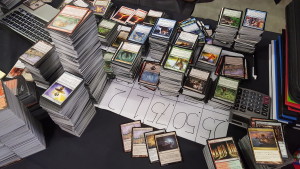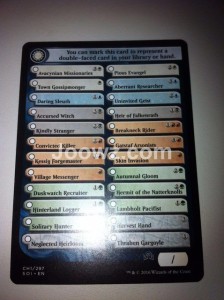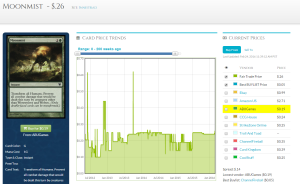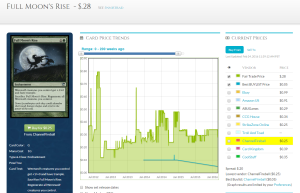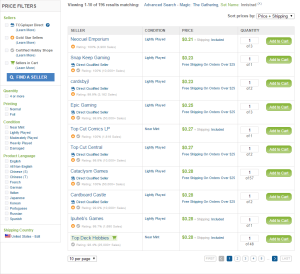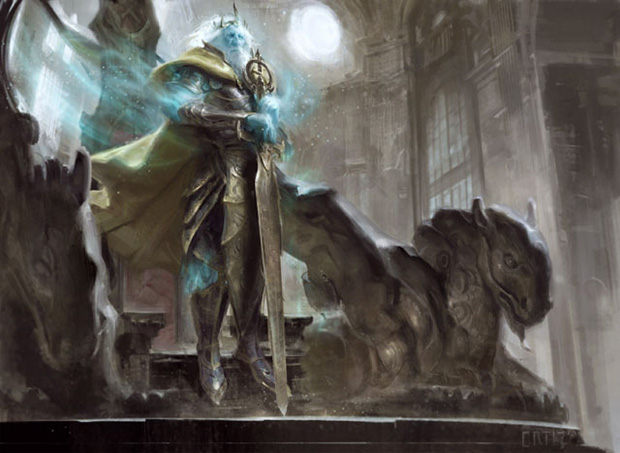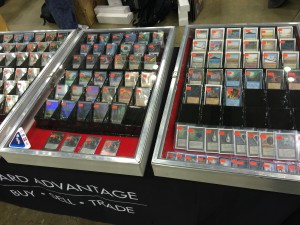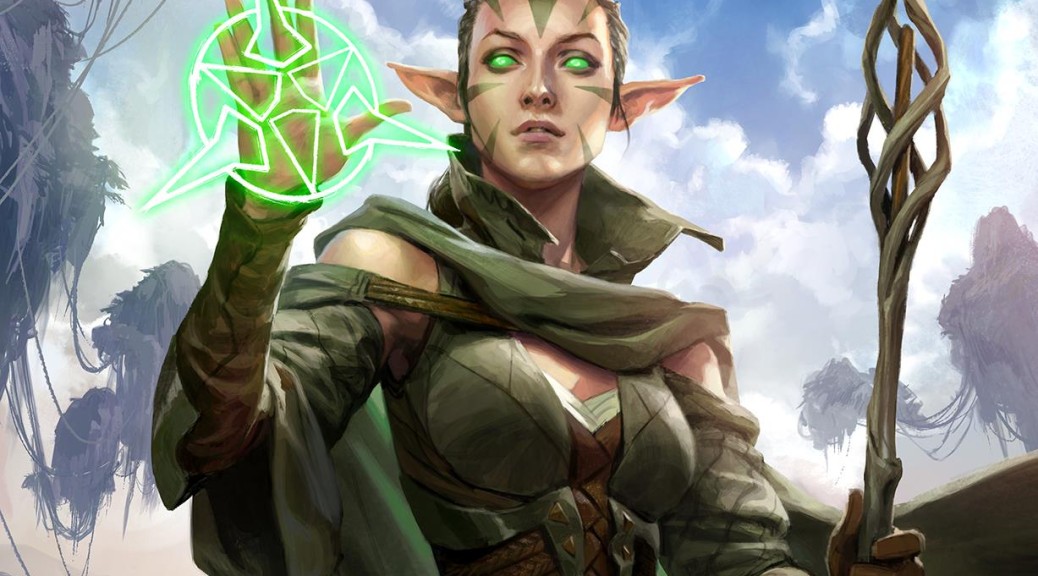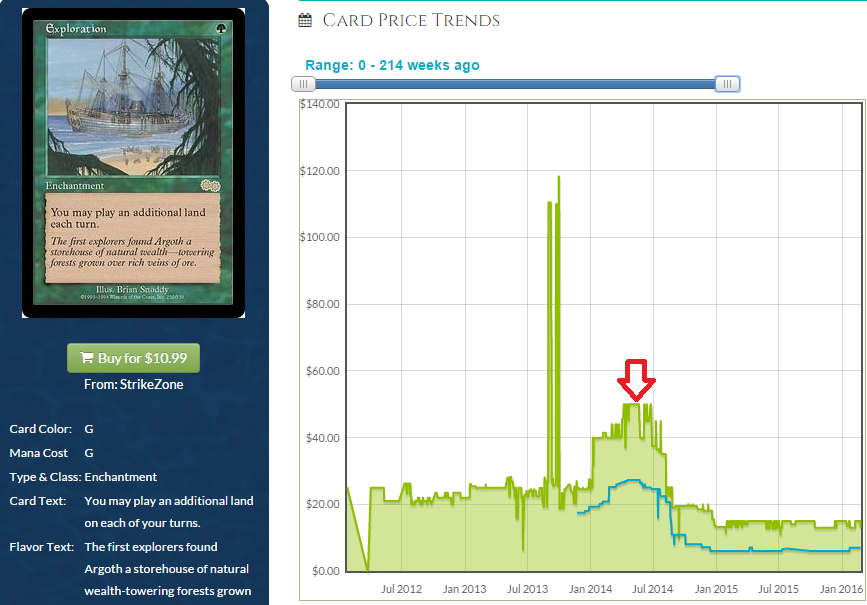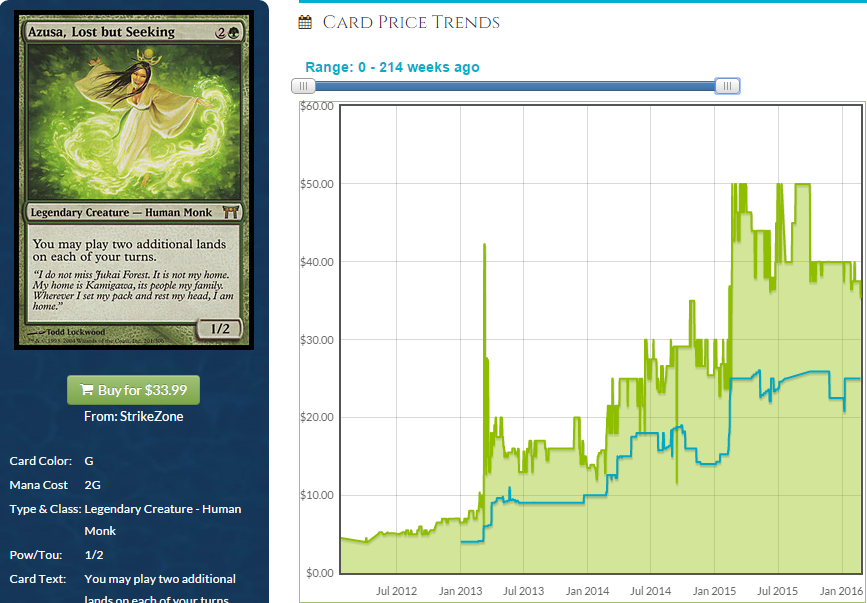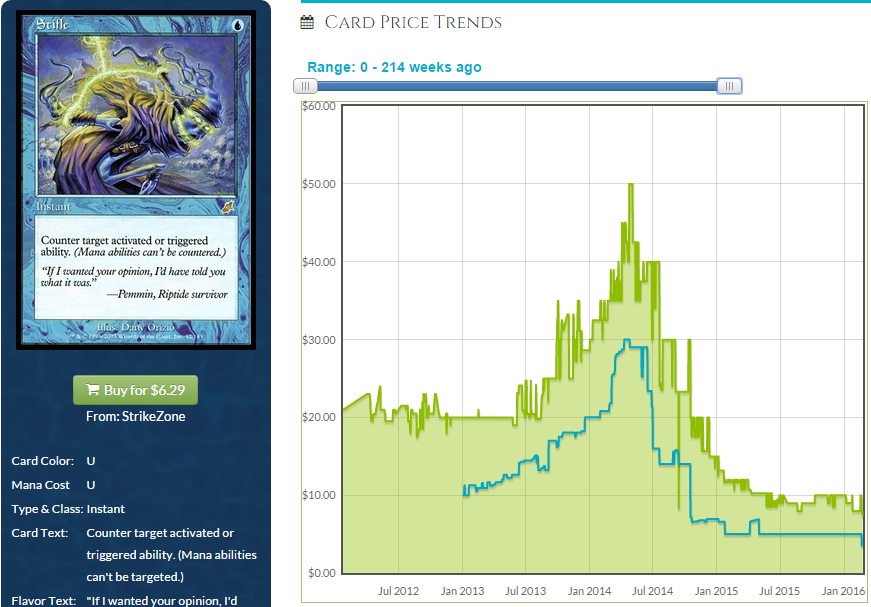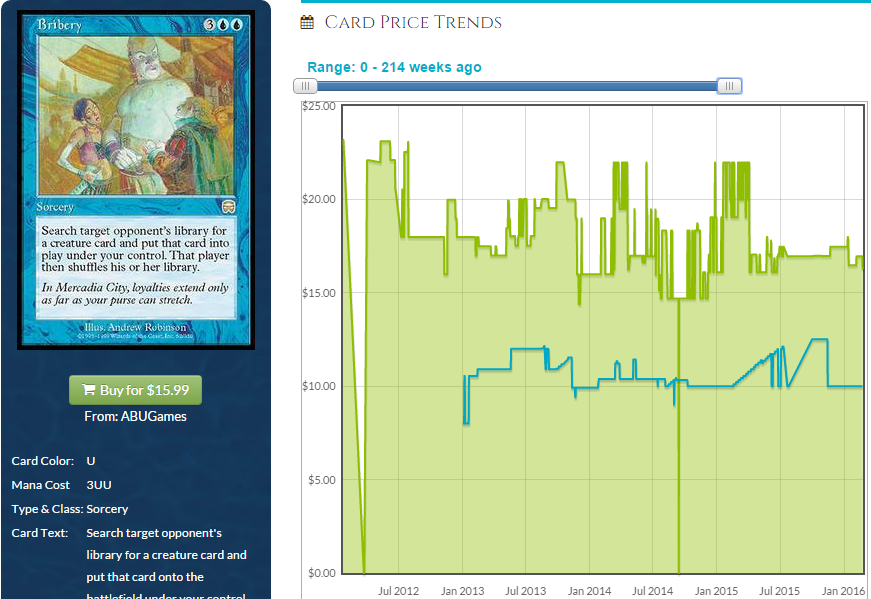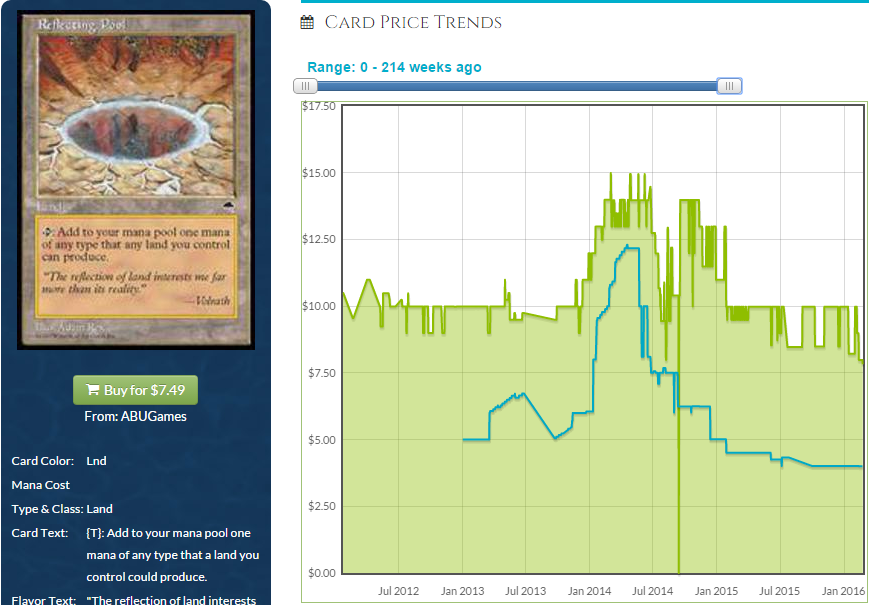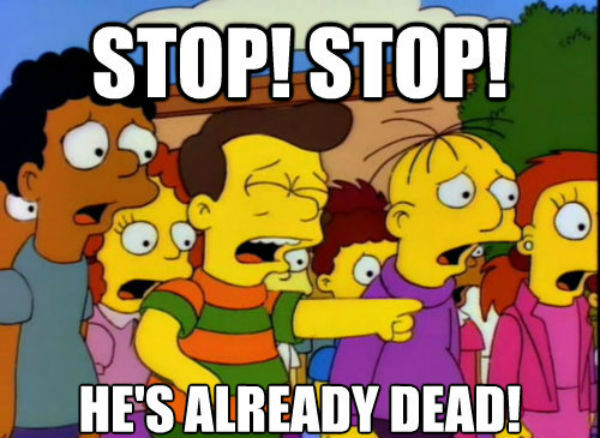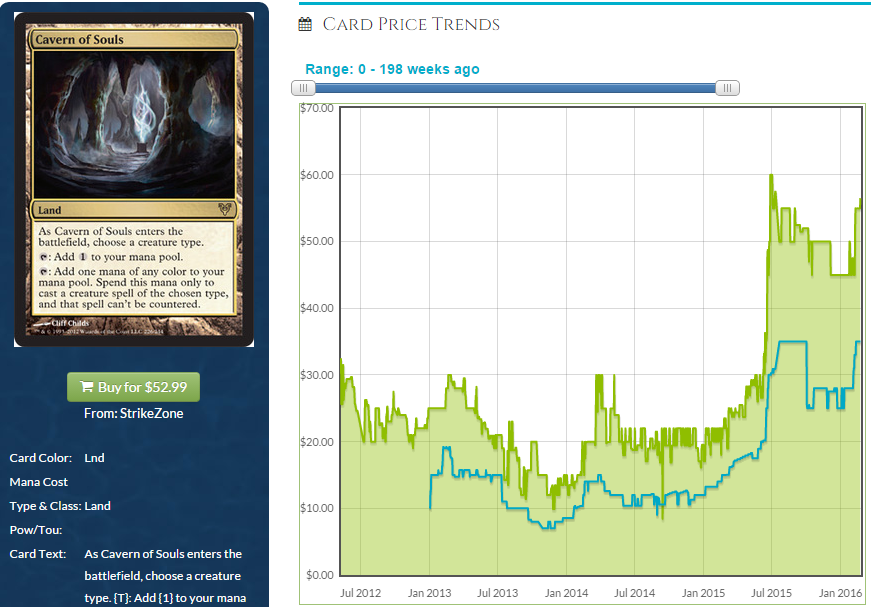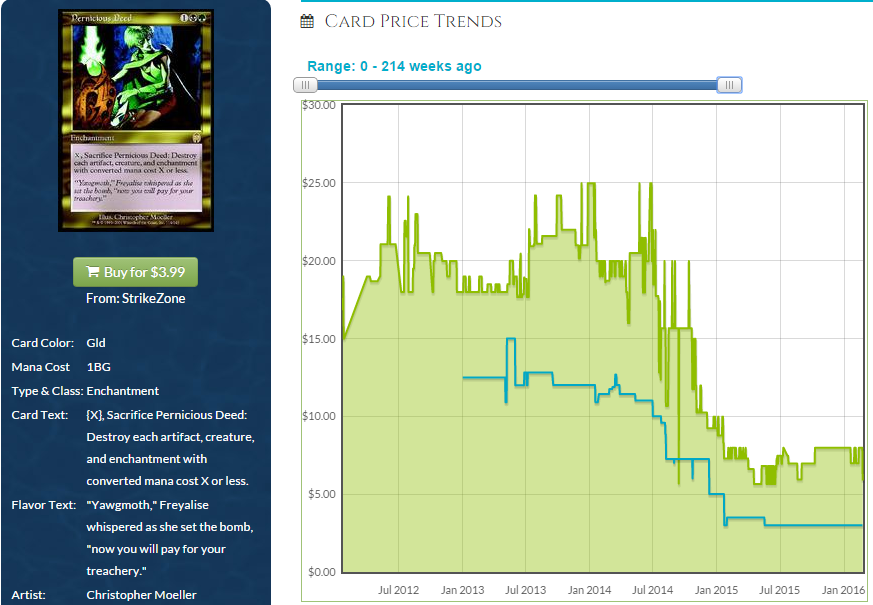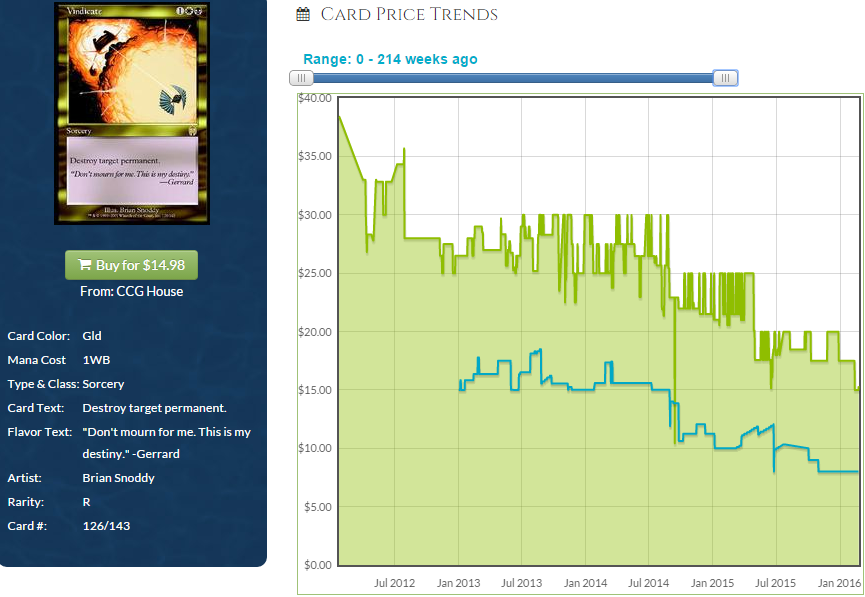Back in December, I decided to have some fun with an article. With Standard largely solved at the time and Modern in a lull, I took the opportunity to look ahead to 2016, and made some bold predictions. Looking back at that article, things turned out pretty well, as Ulamog, the Ceaseless Hunger went from the $15 I called it at then to $30. While I hope I saved or made people money with that call, it’s actually the less interesting one to talk about today.
“The Summer 2016 Specialty Release will be Multiplayer-focused
Let’s take a brief walk through history.
2009: Planechase
2010: Archenemy
2011: Commander
2012: Planechase 2012
2013: Modern Masters
2014: Conspiracy
2015: Modern Masters 2015
The Modern Masters sets throw it off over the past few years, but if you look back at the history it’s pretty clear that Wizards highly values a multiplayer-centric release during the summer. The annual Commander decks have taken some pressure off of this trend and made room for Modern reprints, but I have to believe that 2016 takes us back to multiplayer land.
My prediction? Archenemy 2. The inclusion of Surge — and multiplayer-centric cards in general in Oath of the Gatewatch — is not a coincidence, and I don’t believe that Matt Tabak’s seemingly-random reference to the Archenemy in this article is either.
Archenemy 2016. Maybe.”
Okay, so I get half credit here. While we didn’t receive Archenemy 2, we did get our multiplayer set in Conspiracy 2, though it remains to be seen what the set’s full title actually is (IS BRAGO KING ETERNAL OR NOT?!? I NEED TO KNOW). Or maybe I only get a third credit because they also announced Eternal Masters as one* of our summer sets. I don’t know; it’s all confusing in 2016.
If that were all there was to this, I wouldn’t have approached the topic of supplemental sets. But I’ve been kicking around this article for awhile and Conspiracy 2 is simply the latest in the line of supplemental sets. And while they may not all be of equal interest to us, the fact is they are becoming more and more important financially. I’m going to focus on the Commander series today, and circle back next week to handle the Planechase, Archenemy and Conspiracies of the world. I’ve been posting about a lot of these cards in the ProTrader forums over the past few weeks, and there’s been some great discussion about the future of some of these there, though the following card took us all by surprise.
As you can see, this is a seemingly random buyout, but it’s far from the first when it comes to these sets. Take, for example some of the other cards in that set. We saw major price corrections on Damia, Sage of Stone, Skullbriar, the Walking Grave and XX a while back, and it seems Magmatic Force has joined them.
This one came as a particular surprise because I’ve kept a pretty good eye on Commander over the past few months, and it didn’t look like any more of the cards were primed for a spike. Even those with a little growth still had a ton of stock left, so this came as a bit of a surprise to me Tuesday morning. That said, it only reinforces my standing theory: these spikes are due to scarcity more than anything else. Yes, they’re good cards that see a decent amount of play, but the truth is there’s just not that many of these cards out there in 2016, a full five years after the first Commander set released.
Commander sets are only the tip of the iceberg when it comes to supplemental products over the past five years, and today I want to do a deep dive into these to discover any potential opportunities.
Commander (June 2011)
Not exactly Wizards’ first foray into this market, but the original Commander set was one of the first times they experimented with putting major new cards into a supplemental product. The results were enlightening, if not ideal.

Scavenging Ooze may be super affordable now (on that note, it’s showing some momentum and is likely headed upward before too long – fair warning), but when Commander came out ScOoze was pushing well past $40 and sold out everywhere. Wizards didn’t anticipate that the set would be as popular as it was, and it sold out very quickly and led to shortages.
At least, some of them did. The deck with ScOoze was the first to go, and not long after was the Angel deck with Kaalia. Meanwhile, Political Puppets set on the shelves for months. As players flocked to pick up the “good EV” sets, the others were ignored. Which, in my opinion, is a big reason why Flusterstorm is now over $60 and the most expensive card in the set.
But it’s far from the only card from the set to undergo some movement recently. We’ve seen price corrections in the past year on stuff like Collective Voyage, Skullbriar, the Walking Grave, Damia, Sage of Stone and more.
Which begs the question – is there anything left from this set to invest in?
Riku is the most striking of the bunch. Seriously, this thing is going to see a correction up to at least $15 in the next two or three months. There’s too much momentum in the graph and dwindling supply for it to stay sub-$10 long.
But RIku isn’t the only one worth looking at. The following cards all have some things in common: steady demand, slowly increasing price and shrinking supply. Sooner or later these things converge and hit a breaking point, and a major price correction of 20-30% or more occurs.
- Aura Shards
- Martyr’s Bond (this one has moved a decent amount already, but keep an eye on this as it could go higher).
- Homeward Path
- Propaganda
- Wrexial, the Risen Deep
- Champion’s Helm
- Austere Command
- Zedruu the Greathearted
I’m not saying to go out and buy these cards and watch them spike in the next two weeks. But I am saying that almost all of these (some more than others) fit the Magmatic Force profile, and could easily spike in the same way over the next six months. If you’ve considered picking any of these up, now is the time.
Commander 2013
Apparently Wizards didn’t learn from the Scavenging Ooze debacle, because they repeated it with True-Name Nemesis. Everyone’s favorite Merfolk (just kidding, mine is Silvergill Adept) came out of the gates at $50 as it completely reshaped Legacy, teaming up with buddy Stoneforge Mystic to wear all the equipment and wreck opponents.

Then again, maybe Wizards learned something, because this time they flooded the market with copies of Mind Seize, the deck containing both True-Name and Baleful Strix. This had the effect of lowering True-Name to $15, though it still messed up the dynamics of the full release on the market.
True-Name itself seems fairly constant at $15, but what about the rest of the set?
- Primal Vigor. Spiked a while back in the most obvious-to-predict jump ever, and has recovered from where it settled to near an all-time high again of $8. While I have no doubt this can double in the next year or two, it’s also got to be on Wizards’ list of a reprintable targets. Still, nothing not to like in the short-to-medium term.
- Thousand-year Elixir. There’s definitely something to like here. This was pushing $10 when it had only one printing, and it’s currently sitting at its highest price (just under $3) since its release. Stock is there for both printings, but there’s a lot of momentum here and that stock won’t last forever. Maybe looking at a year before the true “spike” on this, but worth picking up now if you want them.
- Sanguine Bond. At $2, this is finally rebounding from a mess of reprints. For those who don’t remember, this was $10-15 five years ago, and after being pushed to near-bulk by reprints in the last few years it’s starting to rebound. This is one of those you can nearly guarantee will be $5-8 within 18 months.
- This is moving as well. We can use the original Commander as a baseline for a lot of these cards, and like the original set this set seems apt to experience some spikes as well, and soon.
- Bane of Progress. Hurt by a second printing, this is near-bulk right now despite being enormously powerful. Don’t lose these in your bulk box.
Commander 2014
Another Commander set, another one with low-print run cards with rising prices and dwindling supply. Here’s the highlights.
- Freyalise, Llanowar’s Fury. Not the most powerful planeswalker objectively, Freyalise is nevertheless a solid option in most decks that can play her, and has been showing some growth this year. Not perilously low on supply or anything, but it also doesn’t feel like this will be cheaper than the $6 it is now ever again.
- Ghoulcaller Gisa has actually already gone crazy, and I doubt there’s a ton of short-term upside left at $5. But this is an excellent example of what other cards in this set could do over the next year or two.
- Emeria, the Sky Ruin. Solid growth on this over the last year, and it shows no signs of slowing. If this doesn’t get reprinted, there’s almost no doubt it will be $10 within the next two years, and if things break right it could get there even faster.
- Caged Sun. I went very deep on these when they were first printed in New Phyrexia, and they represented strong and safe money. The reprint came to me as a chance to pick up even more copies on the cheap, and I love picking these up around $3.
- Rite of Replication. I’ll hit this one here even though it was also in Commander 2015, but this represents a chance to grab this previously $10 card at a buck. It’s a long-term hold, but a sure bet at current prices.
- Arcane Lighthouse. This may actually be one of the best targets on here. Available at a dollar today but with dwindling supply. Much like Myriad Landscape experienced a big price correction a few months back, this is likely the next in line.
- True Conviction. This was a card that saw strong growth in the year before a reprint, and it’s showing some rebound momentum after that reprint. Another dollar rare, another great medium-to-long-term hold.
Commander 2015
As the most recent Commander set, there are some good and bad things about this edition. One of the biggest pros is, of course, the price. With these so recently released and is even still available on shelves, the price on most of these cards is rock bottom.
The downside is that we don’t know which ones will do well over time. Sure, in many cases we can make accurate predictions, but it’s a lot harder for me to sit here and predict a card will rise than it is to study charts and let the data do the talking for me. Still, let’s see what we can find.
- Command Beacon. As the most expensive card in the set and a hugely popular land, I imagine this will almost certainly see a reprint in 2016, and 2017 if not. At the current buy-in of $11, I’d rather just stay away from this.
- Blade of Selves would fall into the same category, except it has a set-specific keyword. While they could put this into another product, it doesn’t seem easy for them to do so. I don’t necessarily want to buy these to hold, but if you need to pick one up for yourself you should probably do so.
- Meren of Clan Nel Toth. I love this card, and have been on the lookout to pick one up for my Karador deck. At $9 and with another set-specific mechanic, I don’t see this falling either.
- Coldsteel Heart. This was a $2.50 mana rock before the reprint, and is a random uncommon I see forgotten about these days. Great pickup at current prices.
- Eldrazi Monument. Not only are our new Eldrazi overlords everywhere and this is on theme, but it was a $10 before the reprint. Cards like that are certain to start the climb back to those heights within a year, and $4 is the ground floor on these.
- Gisela, Blade of Goldnight. The climb back up has already started on these, and there is no reason to think it will stop anytime soon. Don’t forget this was a $15 card before the reprint, and available today at $4 for a Mythic Angel with a huge effect on games. This is the stuff mtgfinance dreams are made of.
- Lightning Greaves. It’s had a lot of printings, and for a long time those printings were $7-8. It’s been reprinted a lot so expectations can be tempered, but I’m mentioning this because it is at a floor.
- Blatant Thievery. This one is a little more narrow but still incredibly powerful, so at $1.50 there’s a lot to like for a previously-$7 card.
There you go. That’s a lot of cards, but I warned you in advance it was going to be a deep dive. Truthfully, these Commander sets and other supplemental products have been great on the finance end, as they make cards that were moderately priced available cheaply for players, and “reset” the copies out there for people looking to hold onto theirs for the long haul.
Come back next week when I dive into the rest of the supplemental sets!
Thanks for reading,
Corbin Hosler
@Chosler88 on Twitter/Twitch/YouTube
